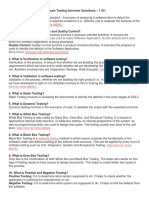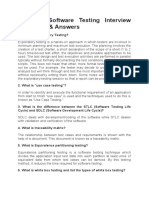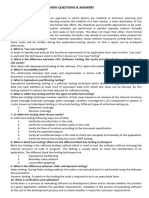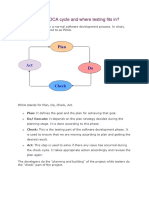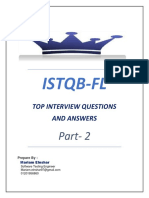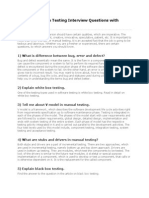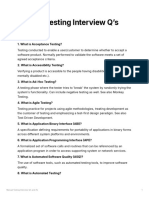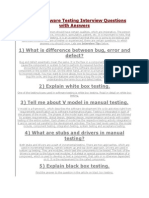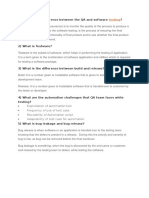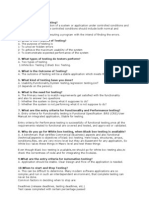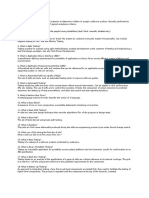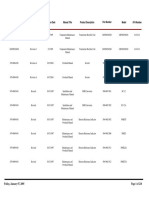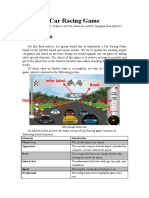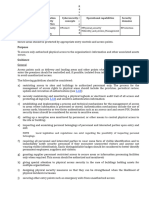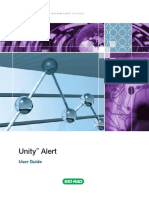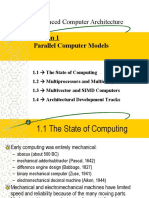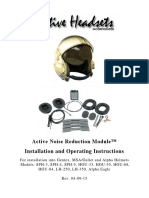0% found this document useful (0 votes)
17 views4 pagesSoftware Testing Interview QA
The document provides a comprehensive overview of software testing, including definitions, types, and methodologies. Key concepts such as Manual vs Automation Testing, different levels of testing, and various testing techniques are explained. It also covers important terms like Test Cases, Bug/Defect, and the Software Development Life Cycle (SDLC).
Uploaded by
tanmay4227Copyright
© © All Rights Reserved
We take content rights seriously. If you suspect this is your content, claim it here.
Available Formats
Download as PDF, TXT or read online on Scribd
0% found this document useful (0 votes)
17 views4 pagesSoftware Testing Interview QA
The document provides a comprehensive overview of software testing, including definitions, types, and methodologies. Key concepts such as Manual vs Automation Testing, different levels of testing, and various testing techniques are explained. It also covers important terms like Test Cases, Bug/Defect, and the Software Development Life Cycle (SDLC).
Uploaded by
tanmay4227Copyright
© © All Rights Reserved
We take content rights seriously. If you suspect this is your content, claim it here.
Available Formats
Download as PDF, TXT or read online on Scribd
/ 4






